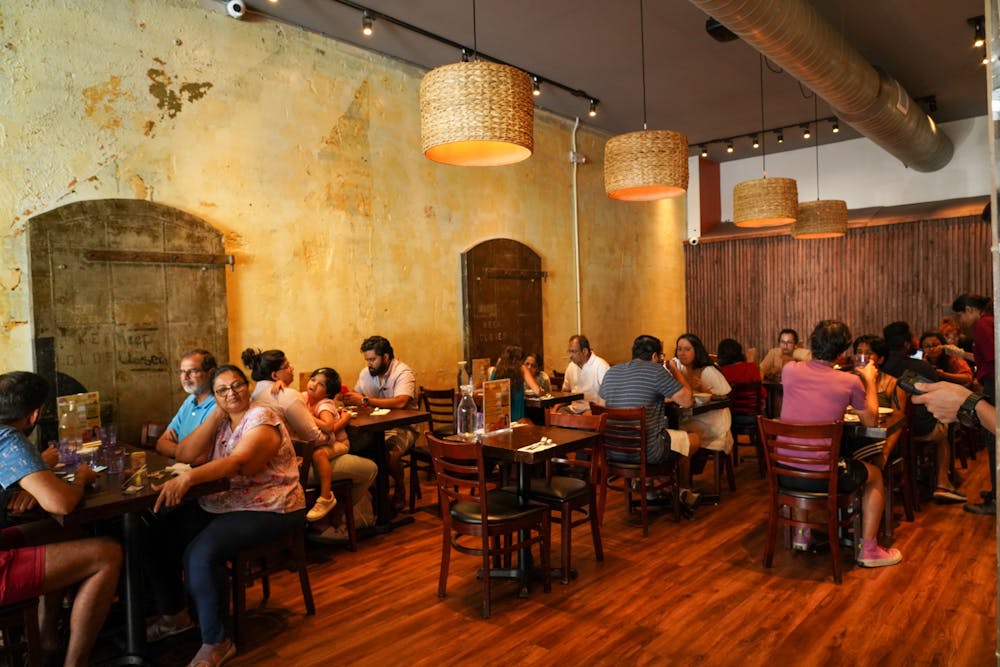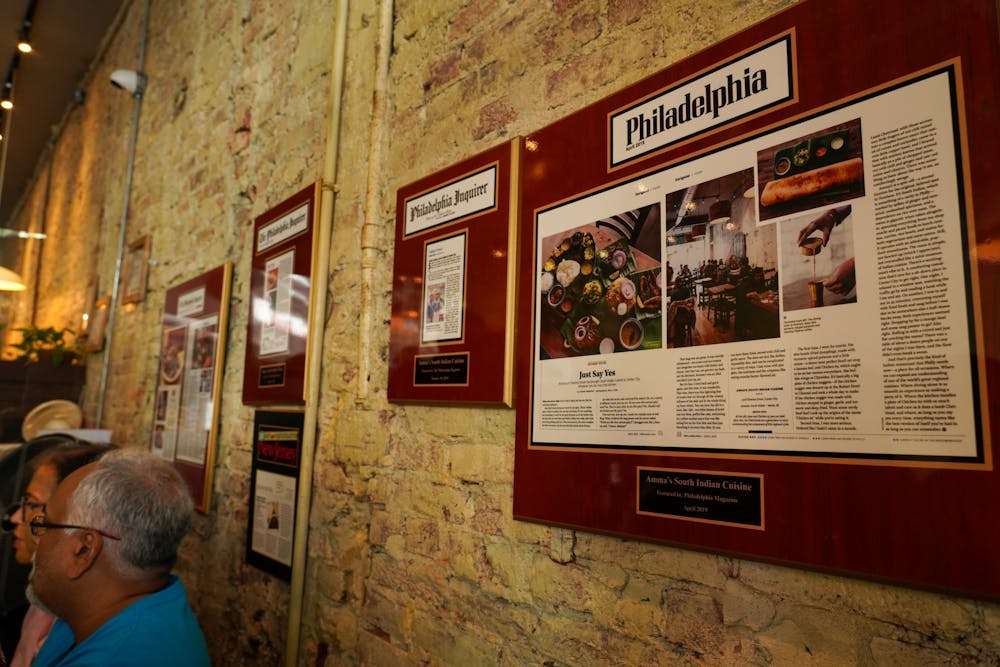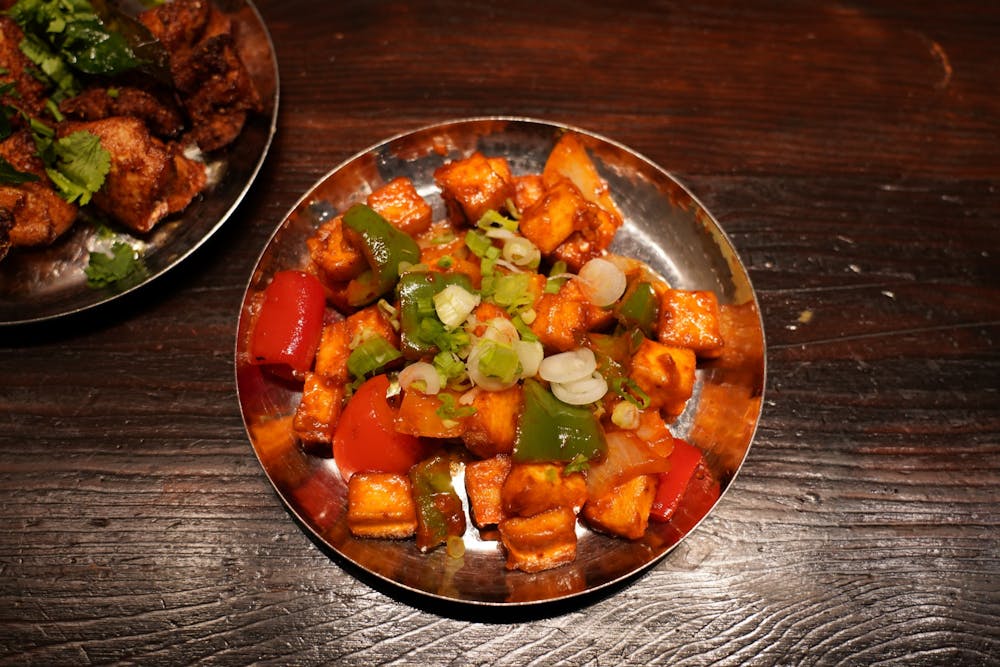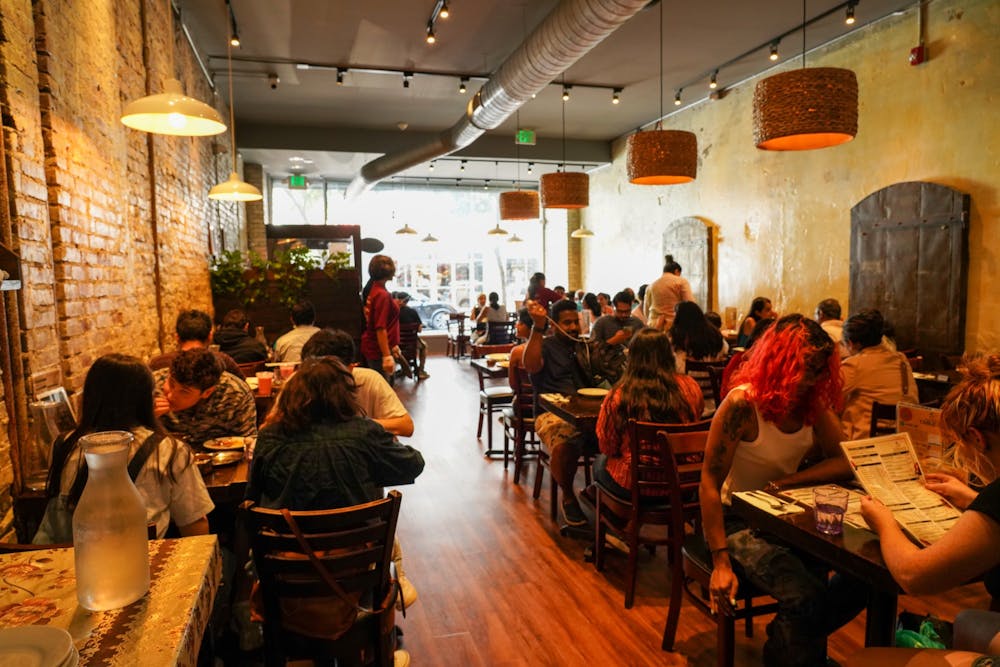“Amma” means mother. It’s perhaps the most ubiquitous word in South India; in Tamil, Telugu, Kannada, and Malayalam alike, the word “amma” evokes a range of emotions, from love to belonging to warmth. When I think of my own amma, I think of my childhood in Chennai, India: loitering in a cramped kitchen, touching everything, asking her what this ingredient is or what that smell is. I think of slowly counting down the minutes after she shooed me out, waiting until she plated whatever concoction she’d decided on for the day, and then gulping it down before I was reprimanded for eating too fast.
This nostalgic sense of place is the exact sensation that the owners of Amma’s South Indian Cuisine—Balakrishnan Duraisamy and his friend and co–chef Sathish Varadhan—tap into. I walk into the Amma’s location in Center City and pick up on an instant familiarity. The walls are an earthy brick design, stylistically peeling like an old apartment building. Doors that don’t open are attached on the side, like the doors outside boiler rooms, or the stairs leading up to a terrace. The lighting is dim but not too dim; intimate but not dark.

“When you taste the food, I want it to feel like you’re tasting your own mother’s food,” says Duraisamy, who I sit down with after he offers me a mango lassi, a smoothie with mango and yogurt that's refreshing even on the hottest of days. “We want our food to be as authentic to South Indian food as possible.”
When Duraisamy and Varadhan opened the first Amma’s restaurant in Camden County, N.J., they noticed that there was virtually no local place that served authentic South Indian food. “People were driving up to Edison for this kind of food, [and we] wanted to change that,” Duraisamy says. “We were the first South Indian restaurant in the area.”

Amma’s was an instant hit, and after tasting their food, it isn’t hard to see why. I order the chili paneer appetizer, an Indo–Chinese dish where fried cubes of paneer (a kind of cottage cheese) are served with chili and soy sauces, vinegar, and bell peppers. The sauce is sweet, sour, and spicy, a big component of South Indian cuisine. The paneer is crunchy yet soft, melting in my mouth as I savor the explosion of flavors and textures.

Then we get to the two showstoppers. First comes the masala dosa, a type of dosa (fermented pancakes made of rice and lentils) stuffed with potatoes and curry leaves and served with sambar (lentil–based vegetable stew) and chutneys (dipping sauces including coconut, which is white, and mint–coriander, which is green). I tear apart the flaky dosa, dipping it in the chutney and crunching through the spiced potatoes.
Next arrives the vegetable thali, which translates to a "vegetable plate" or "full meal." And it’s a full meal indeed. A plate of basmati rice is placed in the middle of ten rotating sides: chutneys of varying spice levels, pakoras (spiced fritters), and a soft, sweet dessert. On top of the basmati rice are a couple of chapatis (a type of flatbread). Despite the compartmentalized look of the dishes, they’re meant to be combined—the rice mixed with the chutneys, the pakoras and chapati mixed and blended with the sambar. The only dish I used a fork for is the chili paneer. Finger food is a staple of a mother’s cooking; one doesn’t care for using knives and forks properly in the comfort of one’s home, after all, nor in the comfort of the region’s cuisine.

When looking at the three dishes in unison, I notice the color distribution quite vividly: orange, yellow, white, and brown, all hues from spices that make up the majority of South Indian food. “We grind our own spices,” says Duraisamy. “We didn’t want any artificial sweeteners or MSG in our food … that’s not genuine, that’s only for attraction.”
And Duraisamy and Varadhan have proven that they don’t need artificiality to grow their business. Only a few days ago, a new West Philadelphia Amma’s location opened right next to Penn’s campus. “We received multiple [requests] from Drexel and Penn students and we wanted more people to taste our food,” Duraisamy says. He also expresses a desire to spread South Indian food as a giant in its own right within wider notions of Indian cuisine.
“[Non–Indians] have only heard of chicken tikka masala or curry when it comes to Indian food … they don’t know anything about South Indian food, and we want to introduce people to that.”
“Amma” means mother, but it also means home. And that’s exactly what Amma’s South Indian Cuisine feels like.

